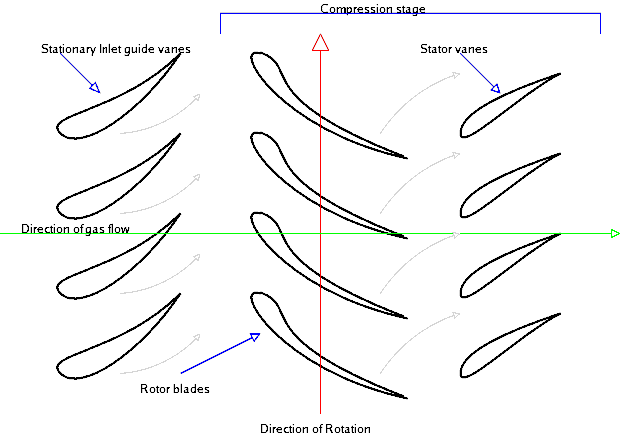Looks really good, for a start!
If possible (I don't know your printing constraints); Round the leading edges of the rotor and stator blades, and sharpen the trailing edges. Avoid blunt or bluff faces whenever possible.
Also, if I'm interpreting your flow going from right to left and clockwise rotation as viewed from the aft looking forward; You want to reverse the curvature of the stators. You want the leading edge of the stator to be closely aligned with the angle of the flow coming off the preceding rotor, and then curve to straighten the flow more for the next rotor: (in this picture the flow is left to right)

If possible (I don't know your printing constraints); Round the leading edges of the rotor and stator blades, and sharpen the trailing edges. Avoid blunt or bluff faces whenever possible.
Also, if I'm interpreting your flow going from right to left and clockwise rotation as viewed from the aft looking forward; You want to reverse the curvature of the stators. You want the leading edge of the stator to be closely aligned with the angle of the flow coming off the preceding rotor, and then curve to straighten the flow more for the next rotor: (in this picture the flow is left to right)


